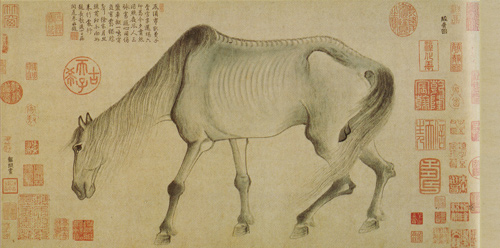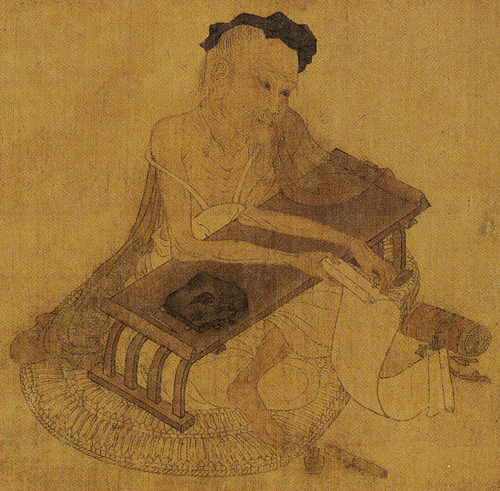- 中文
- EN
- Français
- 日本語
- 한국어
- 繁體中文
Exhibiton of Chinese Painting and Calligraphy of Song, Yuan and Ming Dynasties from the Osaka City Museum of Fine Arts Held at Hong Kong Museum of Art

Gong Kai (1222 – ca.1307)
Emaciated horse
Handscroll, ink on paper
Collection of Osaka City Museum of Fine Arts

Wang Wei (701 – 761)(Attributed)
Fu Sheng expounding the classic
Handscroll, Ink and colour on silk
Collection of Osaka City Museum of Fine Arts

Zhang Sengyao (active early 6th century) (Attributed)
Five planets and twenty-eight constellations (section)
Handscroll, ink and colour on silk
Collection of Osaka City Museum of Fine Arts
China and Japan have a long history of cultural exchange. The Japanese have been avid collectors of Chinese art since the Tang and Song eras, an expression of their age-old passion for Chinese art and culture. Centuries of such diligent efforts resulted in impressive collections of ancient Chinese painting and calligraphy, both in the private and public sectors of Japan.
The core collection of Chinese painting and calligraphy in the Osaka City Museum of Fine Arts came from the donation of Abe Fusajiro (1868 – 1937), a magnate in Japanese textiles in the early 20th century. Influenced by preeminent Kansai sinologists, Naito Konan (1866 – 1934) and Nagao Uzan (1864 – 1942), Abe acquired both in Japan and from China, a sizable holding of works by ancient Chinese masters. In 1943, as a bequest, his family donated his collection to the Museum, amongst which are works designated as Important Cultural Property by the Government of Japan, such as Fu Sheng expounding the classic attributed to Wang Wei (701 – 761), Court Lady Ming Fei leaving the country by Gong Suran (active early 12th century) and Illustration of the Panguxu by Dong Qichang (1555 – 1636).
This exhibition will feature 38 select paintings from the Song to the Ming periods. Other than the three mentioned above, there are also Landscape with pavilions by Yan Wengui (act. late 10th to early 11th century), Bright clouds around distant peaks by Mi Youren (1074 – 1151), Emaciated horse by Gong Kai (1222 – ca. 1307), Orchid by Zheng Sixiao (1239 – 1316) and Illustration of the Pipaxing by Wen Jia (1501 – 1583). The exhibition offers an opportunity to examine the Japanese notions of culture in ancient China and the Sino-Japanese cultural relationship over the past millennium.



